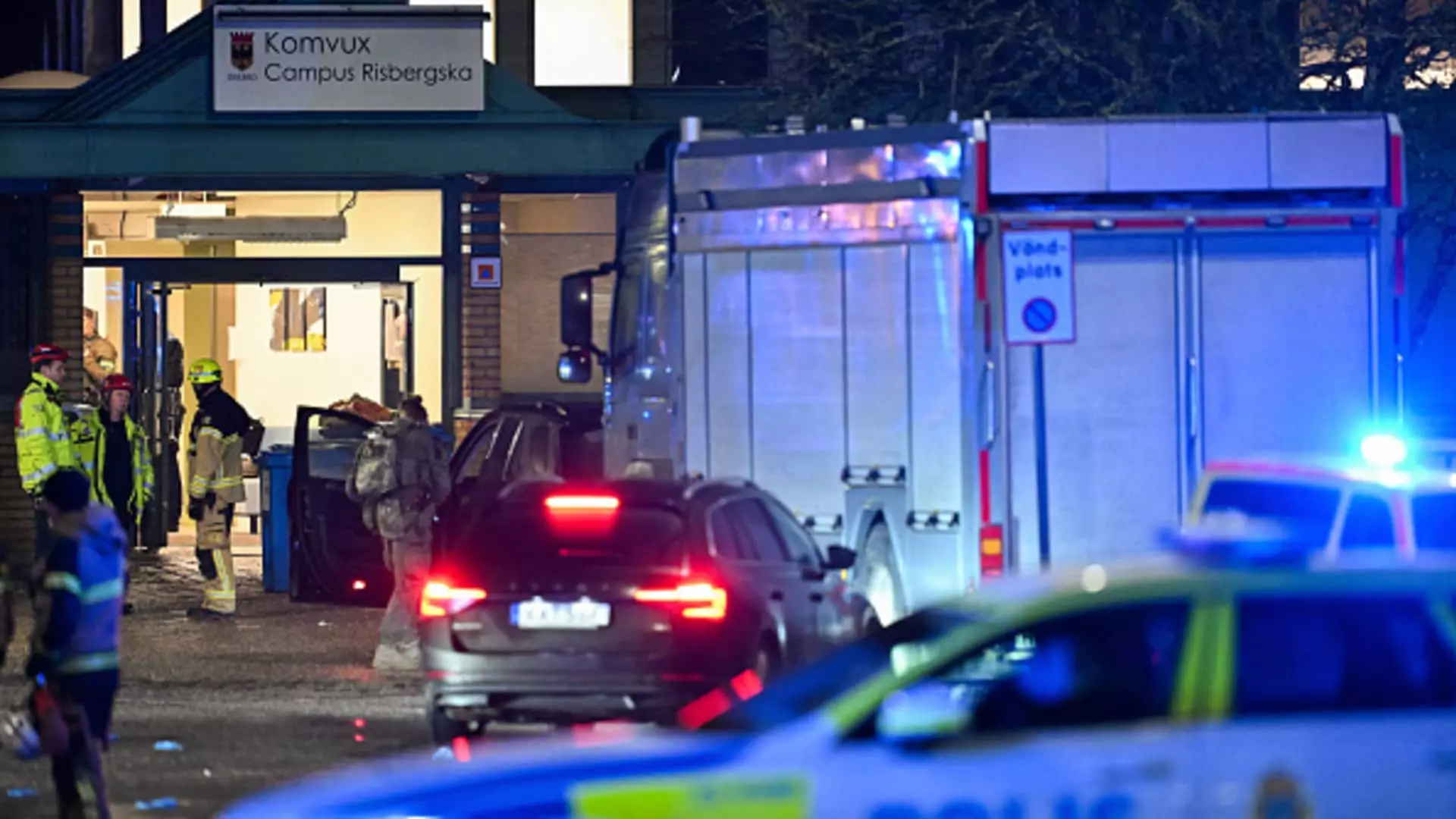On a tragic Tuesday, the serene town of Orebro, Sweden, was shaken to its core as a shooting unfolded at an adult education center, resulting in the deaths of approximately ten individuals. This horrific incident represents one of the darkest moments in the nation’s history, compelling Swedish officials and citizens alike to grapple with the weight of such violence. Prime Minister Ulf Kristersson labeled the day as “painful,” emphasizing the national sorrow that enveloped Sweden. Individuals across the country took a moment to reflect on what such an attack signifies for the future of societal safety and cohesion.
Swedish police reported that the suspected gunman might have been among the deceased, stirring speculation and fear as they continued searches for potential victims at the site of the tragedy. As the investigation unfolded, local police chief Roberto Eid Forest articulated the challenges law enforcement faced, stating, “The extent of the incident is so large.” The ambiguity surrounding the gunman’s motives further deepened the sense of unease. While initial investigations suggested a lack of ties to terrorism and an indication that the shooter acted alone, uncertainties lingered about his background and motivations.
As police initiated an inquiry into various serious crimes, including murder and aggravated weapons offenses, the atmosphere became charged with speculation. The Risbergska school, the tragic focal point of the shooting, served adults who had struggled to complete their formal education. With a mix of residents aiming to learn and immigrants wishing to integrate, this institution represented hope and opportunity. The discord between that hope and the barbarity of the attack left communities grappling with shock.
The response from Sweden’s leaders and its citizenry highlighted the collective grief and resolve in the face of such tragedy. Prime Minister Kristersson’s statements underscored the impact of the shooting not only on victims and their families but also on the national psyche. He noted this was “the worst in Swedish history,” serving as a stark reminder that even nations known for peace are vulnerable to sudden and brutal violence. King Carl XVI Gustaf also expressed his condolences, indicating the depth of sorrow shared at the highest levels of the Swedish monarchy.
International sympathies poured in as well. Ursula von der Leyen, President of the European Commission, conveyed her support through social media, reinforcing the need for solidarity during times of crisis. The swift global reaction showcased a recognition of the broader implications of such violence, emphasizing the urgent need for community resilience and international cooperation to address the growing threats posed by gun violence.
The Human Element: Personal Accounts
In the aftermath of the chaos, personal stories began to emerge, painting a harrowing picture of the day’s events. Maria Pegado, a teacher at the Risbergska school, recounted the fear and urgency as she herded her students to safety. Her narrative illustrated both the chaos of the moment and the instinctive human response to protect the vulnerable. As she described the shots that rang out and the urgent escape from the classroom, the chilling reality set in for those present. “I saw people dragging injured out, first one, then another,” she recalled. These accounts serve as a poignant reminder of the fragility of life and the unexpected nature of violence.
Broader Context: A Pattern of Violence
Though Sweden has long been regarded as a safe haven, recent years have witnessed a disconcerting rise in gun violence, attributed primarily to gang-related activity. The authorities have struggled to counteract this disturbing trend, with research revealing a significant increase in both shootings and bombings. The adult school system, often a refuge for immigrants seeking knowledge and opportunity, now faces the harrowing reality of violence affecting its core mission.
Despite the high levels of gun ownership linked to hunting, Sweden’s struggle with illegal weapons has contributed to an environment where violence can suddenly erupt. Although the nation has managed to maintain relatively low crime rates historically, this incident is part of a troubling pattern that calls for an urgent reevaluation of social safety, gun control policies, and community support systems.
In the wake of this tragedy, it becomes imperative for Sweden to confront the underlying issues contributing to such violence. Encouraging dialogues about mental health, community engagement, and preventive measures against gang violence must take precedence in the national conversation. As the nation mourns, nurturing a culture of unity and resilience is crucial in ensuring incidents like this remain anomalies rather than signals of a worsening trend. Only through comprehensive societal efforts can Sweden reclaim a sense of security while honoring the memories of those lost that fateful day.


Leave a Reply